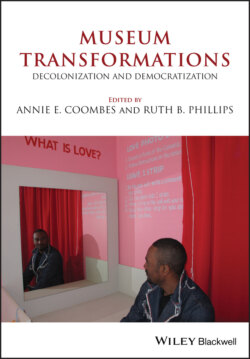Читать книгу Museum Transformations - Группа авторов - Страница 38
Designing the information center: Continuity or counterpoint?
ОглавлениеThe discussion about the design for the first room alone (Room of Silence) lasted three years. These years witnessed numerous controversies and clashes between the often diverging interests of the parties involved. The plans of the exhibition designer Dagmar von Wilcken, whose concept won the contest for the conception of the center, fanned some of these discussions. She was the only woman who took part in the contest. Her concept was unique in that it took up Eisenman’s aesthetic language. Von Wilcken perceived the merit of the entire project to lie in its form as a coherent ensemble with various functions. She did not fear the “subordination” of the information center under the memorial and aimed at congruity with the overall architectural concept: “It seemed completely logical to take up the language of the field of stelae and to continue it in different variations. In each exhibition space visitors are constantly reminded, through various manifestations of the stelae motif on the floor, hanging down from the ceiling, extending from the walls that they are beneath the memorial” (Quack and Von Wilcken 2005, 44).
In contrast, the proposals of the other competitors tended to create a counterpoint to Eisenman’s memorial with the design of the information center: their aesthetic language deliberately pursued an independent concept. These designs wanted to avoid any sort of artistic quotation, repetition, or submission to the memorial. Without exception, the proposals were of high quality and very original. But Dagmar von Wilcken’s design quickly convinced me and, soon after, the board of the foundation and the majority of Kuratorium members. In the period that followed, individual issues were intensely and at times even fiercely disputed, and Von Wilcken had to defend her conception patiently on several occasions. She revised details where it was unavoidable, but otherwise calmly and persuasively stuck to her position, even when her patience was repeatedly put to the test.
A public symposium held in Berlin in November 2001 (Quack 2002) made great ideas and demands regarding the site came to light. Some of the contested issues could not be resolved, but they were in any case debated in a very dedicated manner. The biggest cause of dispute was the administrative office’s draft for the exhibition script. My colleagues and I had developed a version that was based on the original concept but deliberately surpassed it. It contained aesthetic as well as educational elements, and the concept was enriched by the ideas of the art historians, historians, and museum curators present at the symposium. One of the changes that we introduced was the renaming of the first room to Room of Events instead of Room of Silence. In our view, it was important to add more content to the basic concept. In the end, however, we were unable to reconcile the contradictory views and expectations, and we could not reach a consensus. Ultimately the issues were politically resolved within the Kuratorium (Baumann 2011).
Interestingly, most of the participants of the symposium vehemently rejected Von Wilcken’s concept, advocating a more independent design for the information center. For the most part, they were worried about whether or not the design, which took up the artistic form of the stelae, would be able to act as the center’s cognitive and educational counterpart to the abstract memorial. A central concern was that the exhibition might become another “emotional staging,” perhaps even a “sacralization” that would neglect the information one wished to convey. Here, too, the old contentious points flared up again: Should the ensemble host a great memorial with as little explanation as possible or should we rather invest in learning centers, preferably at the original historical sites? In addition, new contradictions soon arose. This became apparent in the design of the first room. Von Wilcken’s original concept envisioned a dark space with illuminated glass showcases, an idea that had arisen from the historians’ original concept of it as a room of silence. The idea of these showcases embedded in the floor and containing a minimum of information was fiercely disputed on several occasions.
